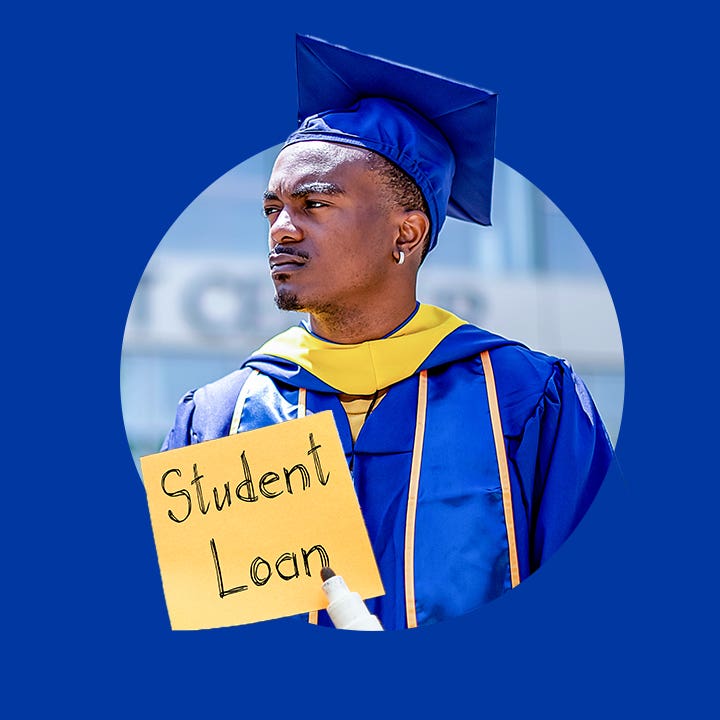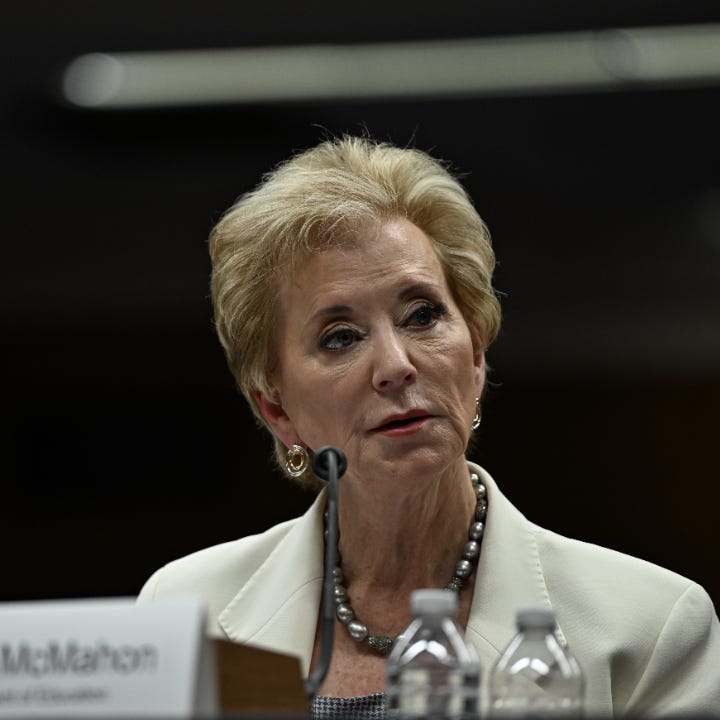What if, this whole time, the rising cost of college was wrapped within a fairly simple catch-22: More federal funding helps students afford school — but it also causes higher sticker prices for everyone.
It’s an argument that Tom Graf, the longtime executive director of state-based lender MEFA, can understand, if not find agreeable. Graf remembers President Reagan’s Education Secretary, William Bennett, opining in the mid-1980s that “every time [financial] aid goes up by a certain percentage, schools see that as the minimum they could raise tuition.”
“And I don’t know how true that is, but certainly if the spigot is wide open,” Graf says, “I think there’s less restraint on tuition increases.”
That begs the question: Since President Trump’s so-called Big Beautiful Bill (BBB) will lower federal loan limits effective July 1, 2026, will colleges and universities finally blink?
Is the cost of college still rising?
College tuition inflation is real, but it’s nuanced. University of Chicago public policy professor Lesley J. Turner co-authored “PLUS or Minus?”, the oft-cited research showing that the federal Grad PLUS Loan program didn’t expand access for underrepresented students as intended — but did result in school price hikes.
Why federal Direct PLUS Loans are under fire — and how their potential end impacts your student loan options
Conservative lawmakers make an accountability argument: If Congress limits federal loan borrowing, universities will have to compete for students and be less able to drive up tuition costs that shift the overwhelming expense to taxpayers.
Read more
However, Turner, who has been publishing on higher education since 2006, says federal loan access for undergraduate students doesn’t tell the same story.
“And actually, interestingly, if you look at inflation-adjusted net tuition — so tuition net of grants — prices have been pretty much flat for like 10 years, and in recent years, they’ve even gone down,” Turner says. “And so I think there’s this sort of mismatch between the price that gets published on institutions’ websites and the price that students actually pay out of pocket.”
Other data bears that out: Nearly half of students and parents (47 percent) reported paying less than the full advertised price for their school, according to an August survey by private lender Sallie Mae. And a 2024 analysis by the Brookings Institution shows that families today are paying the same amount for tuition as in the 1990s when aid and tax benefits are factored in.
Survey says: Families spending more, with help of loans
The Sallie Mae report tells a contradictory story, too: While families support borrowing limits — and believe limitless lending has spiked the cost of college — they’re still spending more and more for higher education.
|
Key highlights of the lender’s 2025 “How America Pays for College” survey |
|
|
|
“When it comes to the Big Beautiful Bill and what the intent of those limits were, setting reasonable limits — again, this is my own thought, and what I’ve seen with it — is more focused on ensuring students and families do not borrow more than they can reasonably afford to repay,” says Sallie Mae vice president Rick Castellano.
Of course, this is where the original catch-22 turns into a self-fulfilling prophecy: Accustomed to the idea of rising college costs, families have felt forced to borrow more and more — and sometimes borrow beyond their means. Nationally-recognized expert and Bankrate contributor Mark Kantrowitz has reported that borrowers whose education debt is out of sync with their income are significantly more likely to default on their debt.

Why finishing college could help solve the student loan crisis
Among students who started bachelor’s degree programs, college dropouts are 95 times more likely to default and represent nearly all the defaults within this group.
Read more
So, will new limits lower the net price of college?
If only we had a simple yes or no answer.
For now, the consensus among experts is this: The cost-of-college equation has multiple changing variables, including schools’ reactions to funding cuts for research and the stiffening of visa requirements for international students, to name a couple of examples.
So, it’ll be challenging to accurately draw lines between cause and effect.
“All of these things have implications for institutions’ decisions around pricing,” Turner says. “And so, I think it’s going to be tricky. A few years from now, we will look back and ask the question, did getting rid of Grad PLUS affect prices? I think that’s going to be a harder question to answer than looking at the creation of Grad PLUS, just because there’s so much going on right now in higher education.”
Bankrate’s take:
We could enter a world where tuition prices come down for some students, not others; at private schools, not public; in some states, not nationally. Consider, for instance, the BBB also gives colleges and universities the ability to set even lower loan limits for specific programs.
“Since there is this requirement for a private student loan to be school-certified, will the school be able to certify additional funds for these programs beyond the federal program?” Enterval Analytics director Elaine Rubin asks. “The federal loan limits are the ones being affected, but how does that play into the overall cost of attendance? So, we still have a lot of questions on how this will impact, but that’s one area where we’re keeping an eye out to see how that will be implemented.”
Tugging on that thread further: If private lenders are allowed to fulfill families’ substantial funding gaps, schools could be less motivated to decrease prices, at the cost of enrolling a less income-diverse student body. After all, even the best private student loan companies will be wary of completely filling the void left by federal loan limits. Lending to the subprime credit family will add risk to their portfolio.
Or, alternatively, will more non-loan aid be offered, continuing to lower the net price of attendance? Schools may increase institutional grants and scholarships. This may, perhaps, be at the expense of endowments that — thanks to the BBB — are now subject to a higher tax rate.
CampusDoor president Sara Parrish says she’s anticipating innovation to also occur at the state level, both in the increase of grants and the potential widening of eligibility at lenders like MEFA (Massachusetts), Rhode Island Student Loan Authority (RISLA) and InvestEd (Indiana).
Wait, doesn’t the BBB hold schools accountable for their prices?
Well, it establishes a “do no harm [to students]” standard: If the majority of a school’s bachelor’s degree-seekers earn less than the median high school graduate’s income in their state, the school would be on track to lose eligibility for federal loan disbursements. The same goes for schools’ graduate-degree seekers as compared to their in-state bachelor’s degree-holding peers. It’s a step-up, perhaps, from the Education Department’s 1990s-era rules around cohort default rates (CDRs).
I think that the industry will always navigate to stay in compliance, but when you apply some of those rules — like, is the graduate making more than a high school student? — you get very good signal on programs that were not producing great outcomes today under that measurement, both at the undergrad and grad level. So, I think that’s really good for students looking and assessing programs to go, ‘Wow, would this program have qualified under that rule?’ … So, I like the school accountability [rule]. Could it be better? Yes. Will the system likely get gamed over time? Yes, just like CDRs were.
— Ken Ruggiero
Ascent CEO

Colleges losing the blame game as D.C. aims to solve the student loan crisis
It’s easy to point the finger at those who set sticker prices. That’s the position of Secretary of Education Linda McMahon.
Read more
How you can pay less for college
After all, it might take a while for costs to truly come down for everyone, if at all. In the meantime, utilize these tried-and-true strategies.
- Consider a lower-cost program: This is the single biggest way to decrease the amount you’ll spend on school. You might explore trade school, for example, now that Pell Grants can be used for short-term certificates. And even if you’re intent on a bachelor’s degree, you can avoid burdensome student loan debt, in part, by attending a community college for two years before transferring.
- Negotiate your financial aid package: Look at choosing a college like you’d choose a home to buy. You wouldn’t just pay the seller’s asking price without some due diligence. Remember too, that you’ll have more leverage if you’re considering multiple schools and can pit them against each other in your shopping process.
- Tap college savings or up your income: Not everyone has a flush 529 plan. If you don’t, you might make up for a lack of cash by taking on a side hustle or cutting unnecessary expenses from your budget. The longer your time horizon before stepping on campus, the better, but everyone can benefit from saving up before school starts.
- Complete the FAFSA: It’s not just necessary for accessing federal loans — it’s also the gateway to federal grants and work-study programs as well as state, institutional and private aid that relies on your FAFSA results to weigh your eligibility for grants and scholarships. Too many families don’t file the FAFSA because they’re concerned they earn too much to qualify for aid. The bottom line is that everyone should complete the FAFSA, otherwise you could be leaving money on the table.
- Exhaust every form of gift aid: Racking up as many scholarships and grants as you can is critical to avoiding or limiting education debt. Like with the FAFSA, you might think that these awards are exclusively for students with perfect grades or low income. But the truth is that there is merit- and need-based aid out there for the vast majority of students. You just have to seek it out.
- Explore work-study, paid positions: Working while studying is easier said than done, but if a part-time college job proves feasible, it’s another way to avoid the last resort of borrowing loans. Even better if you can find a paid position, on or off campus, that fits with your area of interest or eventual career track. Ask your school’s financial aid and career services offices for resources to boost your income.
As a potential next step, consider our guide to getting through college debt-free.
Why we ask for feedback
Your feedback helps us improve our content and services. It takes less than a minute to
complete.
Your responses are anonymous and will only be used for improving our website.
Help us improve our content
Read the full article here












